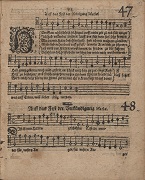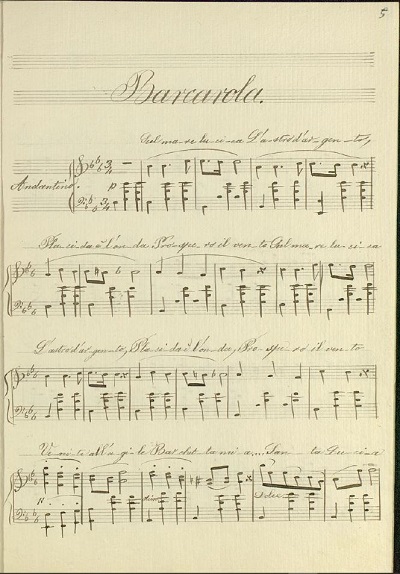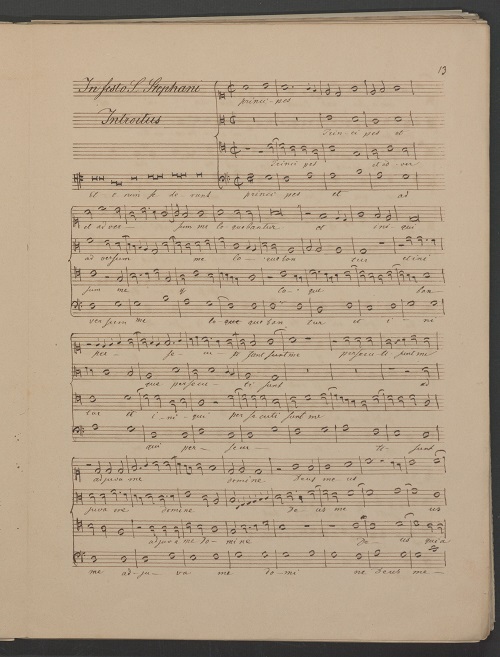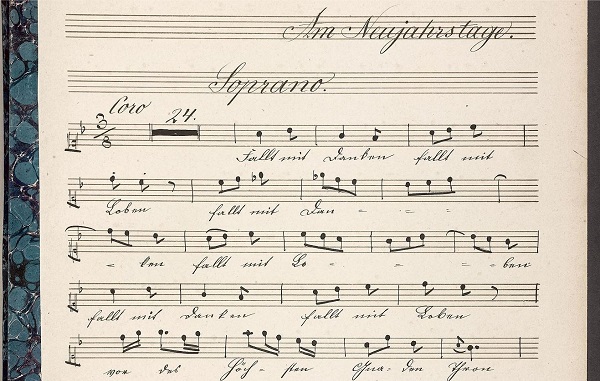Liturgical Festivals in the Western Church for the Christmas Season
Monday, December 6, 2021

The church year in Western Christianity begins with the First Sunday of Advent during the Christmas season. Ever since the liturgical reform after the Second Vatican Council, the Christmas cycle in the Roman Catholic church lasts forty days, until Epiphany (Trium Regum in RISM) on 6 January.
Prior to the reform, Christmastide lasted until the Feast of the Presentation (Praesentatio Jesu in Templo), also known as the Feast of the Purification of the Virgin or Candlemas. It is celebrated on 2 February, forty days after Christmas. The mysteries surrounding the number forty have not yet been completely solved, but it stands for a period of maturity, purification, and completion, as well as for a period of tests, as when Jesus Christ fasted for forty days in the desert as an adult. Starting with the 2018/19 church year, the Protestant Church in Germany, in accordance with the new Revised Common Lectionary, ends the Christmas season with this feast.
Within the Christmas cycle in the Western Church, the feast of the Nativity of Jesus (Nativitas Domini) on 25 December is certainly the best known and most important. Apart from that, there are the four Sundays of Advent to prepare for Christmas as well as further liturgical feasts that are more general or known only at national levels. The day remembering St. Nicholas of Myra on 6 December is an essential pre-Christmas festival. Rich traditions have developed in many Christian countries around the figure of St. Nicholas as a bringer of presents to children. In Germany, the song “Lasst uns froh und munter sein” is a famous Nicholas song.
In Lutheran areas of Sweden, St. Lucia’s Day (Luciae Virginis et Martyris) is a festive occasion on 13 December. It has to do with the historical tradition of solstice celebrations in Scandinavia. Girls play an important role. The popular Neapolitan song “Santa Lucia” has a prominent place in the celebrations.

Giacomo Bortolini, Santa Lucia, autograph manuscript, ca. 1865. Badische Landesbibliothek, Musiksammlung (D-KA) Don Mus.Ms. 217|1. RISM ID no. 450019528. Available online (CC BY-SA 4.0).
On the days from Christmas Eve to the 2nd day of Christmas (24-26 December), church services are heavily frequented. The feast day of the first martyr of Christianity, St. Stephan (Stephani Protomartyris), celebrated on 26 December, is familiar to most churchgoers. The gradual “Sederunt principes” is associated with this day.

Anonymus, Sederunt principes, copy in the hand of Raymund Schlecht, ca. 1866. Universitätsbibliothek Eichstätt-Ingolstadt (D-Eu) Esl I 247. RISM ID no. 450202861. Available online (CC BY-SA 4.0).
And let’s not forget the Feast of St. Sylvester (Silvestri I. Papae et Confessoris), which closes out the Gregorian calendar on 31 December. Celebrating the coming of the new year is not only done by the church. For most, the significance of the turn of the year has been completely removed from its original liturgical purpose. Christmas is a family celebration, and the New Year has become a celebration among friends. The fourth part of Bach’s Christmas Oratorio, “Fallt mit Danken, fallt mit Loben”, which is sung on New Year’s Day (Novi Anni), is also very famous.

Johann Sebastian Bach, “Fallt mit Danken, fallt mit Loben,” from the Weihnachtsoratorium, copied 1833-1865. Národní knihovna České republiky (CZ-Pu) 59 R 14.RISM ID no. 550503015. Available online (CC BY-SA 4.0).
Try searching for liturgical festivals related to Christmas and other times of the year in our catalog using the Advanced Search and selecting “Liturgical Festival.” Most feasts of the Western Church are indexed in Latin in the RISM database, with some exceptions. You can truncate using an asterisk to get around Latin case endings, as in: Concept* Immaculat*.
Image, top: Michael Altenburg, “Herr Gott nun schleiß den Himmel auf,” from Kirchen- und Hausgesänge, part 1. Erfurt: Johann Röhbock, 1620. Leipziger Stadtbibliothek - Musikbibliothek (D-LEm) II. 4. 3. RISM ID no. 100142493. Available online (Public Domain Mark 1.0).
Share Tweet EmailCatégorie: Evénements

